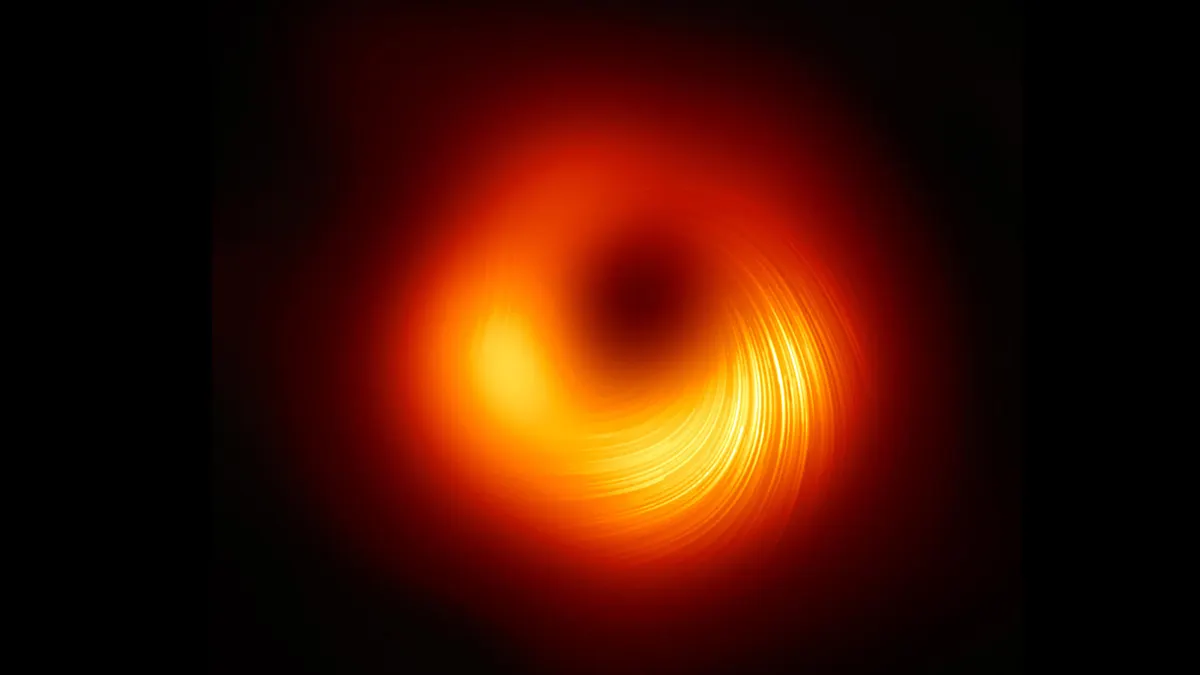Giant black hole 'should not even exist,' stunned scientists say
Scientists are left speechless after discovering a giant black hole
Researchers say they have discovered a jet from a galaxy with a black hole at its center changed its direction to point toward Earth.
The galaxy, named PBC J2333.9-2343, has changed classification due to the unique activity within its core. It was previously classified as a radio galaxy, but the new research released in March has revealed otherwise.
Located more than 656 million light-years away, it is now classified as a giant radio galaxy that has a blazar in its core.
Blazars are a type of galaxy powered by a black hole. They shoot jets of high-energy particles that move at rates close to the speed of light toward Earth, making them appear as bright spots.
UK SCIENTISTS FIND ONE OF LARGEST BLACK HOLES EVER DISCOVERED

This artist's concept shows a "feeding," or active, supermassive black hole with a jet streaming outward at nearly the speed of light. Such active black holes are often found at the hearts of elliptical galaxies. Not all black holes have jets, but when they do, the jets can be pointed in any direction. If a jet happens to shine at Earth, the object is called a blazar. Blazars are categorized differently than other active black holes with jets because they have unique properties when viewed by telescopes. They give off a full range of light, dominated by high-energy gamma rays. As particles in the jets are accelerated to almost the speed of light, they give off a specific infrared signature. (NASA/JPL-Caltech)
The international group of astronomers said their findings revealed in this galaxy the jet had changed its direction drastically and is now pointing "directly towards us."
They observed the galaxy across a wide range of the electromagnetic spectrum, including with radio, optical, infrared, X-ray, ultraviolet and gamma ray telescopes. Then they compared the properties of the galaxy with large samples of blazars and non-blazar galaxies.
NEIL DEGRASSE TYSON SAYS JAMES WEBB SPACE TELESCOPE IS WINDOW TO UNIVERSE 'NEVER BEFORE ACHIEVED'
"We started to study this galaxy as it showed peculiar properties," explained lead author Dr. Lorena Hernández-García, a researcher at the Millennium Institute of Astrophysics. "Our hypothesis was that the relativistic jet of its supermassive black hole had changed its direction, and to confirm that idea we had to carry out a lot of observations."
In this galaxy, the jet is believed to originate from close to the supermassive black hole at its center.

EHT scientists mapped the magnetic fields around a black hole using polarized light waves. (EHT Collaboration)
"With the jet pointing in our direction, the emission is strongly enhanced and can easily exceed that coming from the rest of the galaxy. This, in turn, drives high-intensity flares stronger than those coming from other radio galaxies, thus changing its categorization," the Royal Astronomical Society said in a release.
The orientation of the jets helps determine how a galaxy is classified. When galaxy cores have jets appearing to shoot out perpendicularly, they are called quasars. With jets both in the plane of the school and with one directed at us, this galaxy was reclassified as a radio galaxy with a blazar at its center.
While changes in the direction of jets have been reported before, this marks the first time that such a phenomenon has been observed where it does not suggest the presence of two different phases of jet activity from its formation observed at radio frequencies.

Black hole-powered galaxies called blazars are the most common sources detected by NASA's Fermi Gamma-ray Space Telescope. As matter falls toward the supermassive black hole at the galaxy's center, some of it is accelerated outward at nearly the speed of light along jets pointed in opposite directions. When one of the jets happens to be aimed in the direction of Earth, as illustrated here, the galaxy appears especially bright and is classified as a blazar. (NASA/JPL-Caltech/GSFC)
The release said the direction change appears to have taken place in the same nuclear outburst originating from the blazar's active galactic nucleus, the active supermassive black hole.
While the team does not yet know what caused the shift in the direction of jets, its scientists speculated it could have been due to a merging event with another galaxy or any other relatively large object or a strong burst of activity in the galactic nucleus after a dormant period.
The work is published in a paper in the journal Monthly Notices of the Royal Astronomical Society.


